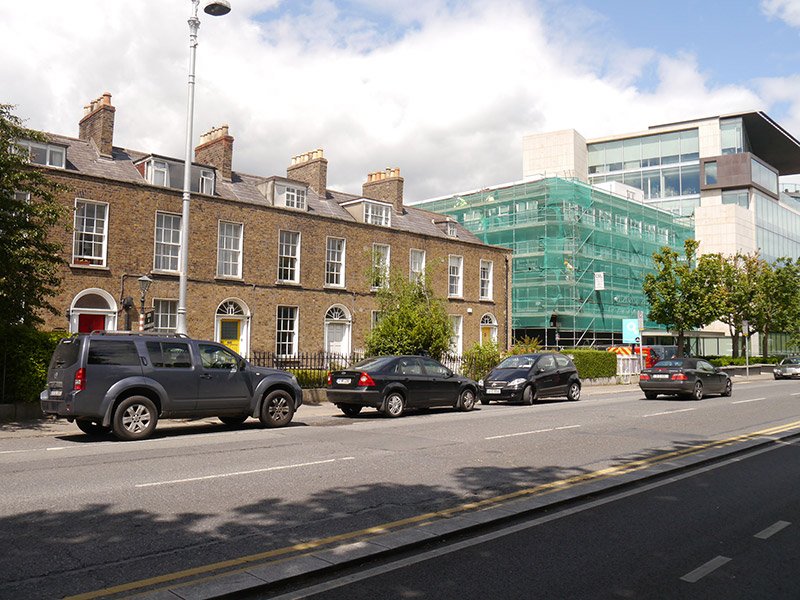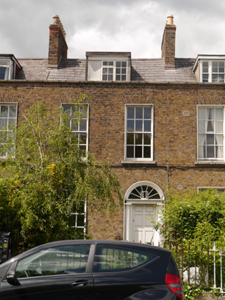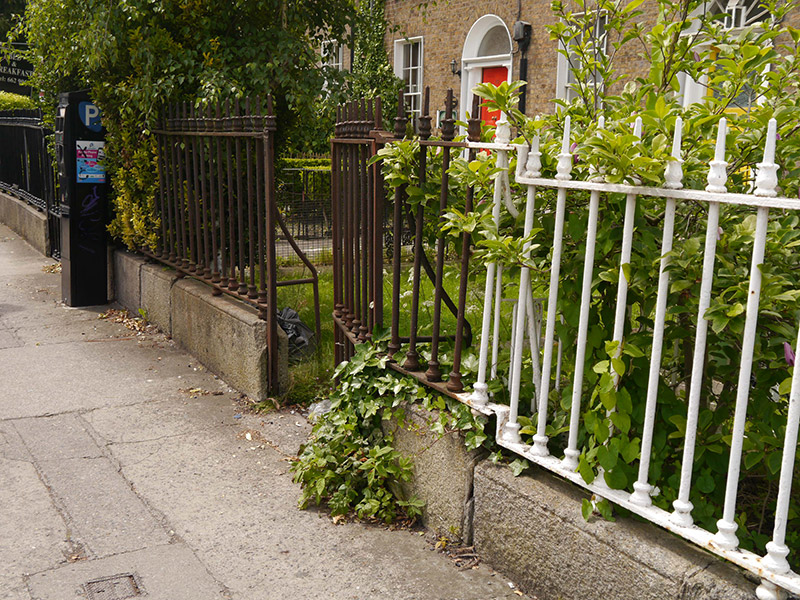Survey Data
Reg No
50100582
Rating
Regional
Categories of Special Interest
Architectural, Artistic
Original Use
House
In Use As
House
Date
1810 - 1815
Coordinates
317163, 233287
Date Recorded
31/05/2016
Date Updated
--/--/--
Description
Attached two-bay two-storey house with basement and attic, built c. 1814 and forming one of terrace of five (Nos. 6-10), formerly part of longer terrace, having lower two-storey flat-roofed modernized return to rear. Pitched slate roof with flat-roofed tripartite dormer window to front, parapet with granite coping and parapet gutters, and brick chimneystacks to party walls. Brown brick walling laid in Flemish bond over painted rendered basement walling; smooth rendered to part of rear elevation and return. Square-headed window openings with granite sills, patent reveals and brick voussoirs. Timber six-over-six pane sliding sash windows to front elevation with simple horns; two six-pane and one boarded window to dormer. Round-headed doorway with painted masonry doorcase comprising rendered surround, fluted Doric columns on plinth stops supporting plain entablature, spoked fanlight with remnant of lantern case, and eight-panel timber door. Limestone-paved entrance platform, accessed by two granite steps, and concrete pathway leading to street, with decorative cast-iron railings to southwest side enclosing small garden accessed by cast-iron pedestrian gate, and with decorative cast-iron railings over moulded granite plinth to front boundary.
Appraisal
A modest late Georgian house, built as part of a terrace, at the northeast end of Warrington Place. The houses have good Doric doorcases, well-balanced proportions and retain common setting features, spoked fanlights and timber sliding sash windows. This house retains its glass lantern to the fanlight. The scale of the terrace contrasts with the properties in the rest of the street and is a good representation of early to mid-nineteenth-century domestic architecture in Dublin. Warrington Place was laid out 1791, but built in the early nineteenth century, as indicated by date stone of 1814 refitted to modern office block.













